The potential for great river fishing for carp across the Channel and throughout Europe is still relatively untouched by UK anglers.
It amazes me that so many anglers seem reluctant to try their hand at the challenges posed by rivers; European anglers target them all the time. True, lakes are easier to read and the carp are more confined, and if you have only a limited amount of time to spend then I can understand why people go for the sure thing.
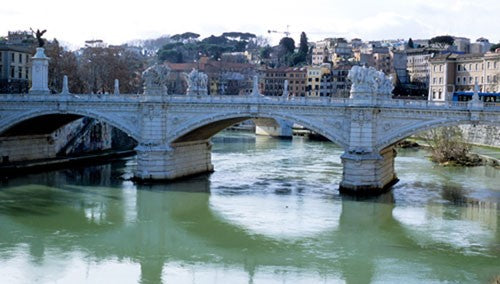
Virtually all the major river systems of continental Europe hold carp. This is the centre of Rome where the river Tiber runs through the heart of the city. The river holds carp in large numbers including some real lumps, and the local anglers are very adept at catching them in the fierce currents that are a characteristic of the river.

Local knowledge can be a big help in finding out the most productive areas of a river system. For instance, my wife Carole and I were staying in a gite in a small village in southern France and when we asked about the fishing in the river we were told that carp could be found in most stretches, especially in the nearby town centre. Consequently we decided to have a look for ourselves and this is what greeted our eyes as we peered over the railings of the bridge that spans the river. If you look carefully you can see five or six carp mooching around in the murky water.
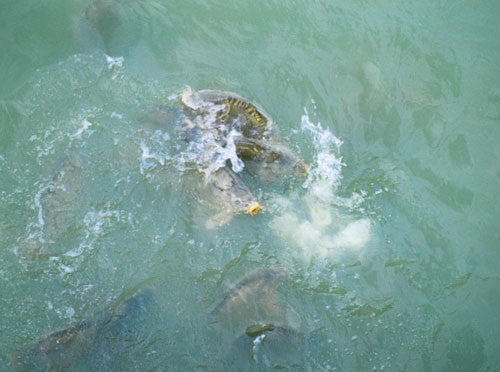
We started to feed them with stale French bread and gradually more and more fish came up from below. Eventually we had about a dozen carp literally fighting each other for the bait we were introducing. We couldn’t wait to get back with a rod. Sadly these carp were regarded by the townsfolk as pets and I think we’d have been lynched if we’d tried to catch them.
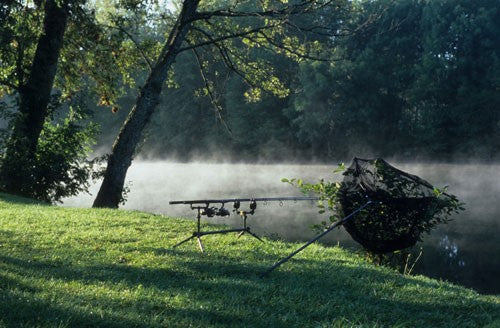
However, those carp showed us that there were decent fish in the river so we set about looking for a fishable stretch to the bridges. Not far away from our gite, the commune had provided a lovely shaded picnic area right beside the river. It was about four hundred meters long with nice grassy banks, well shaded in places with lots of overhanging trees. There were even picnic tables and barbeque pits! The drawbacks were that a) there was no night fishing allowed, and b) the place was packed solid with picnickers for most of the daylight hours. This meant that we were restricted to fishing until about ten in the morning and again after five in the evening.
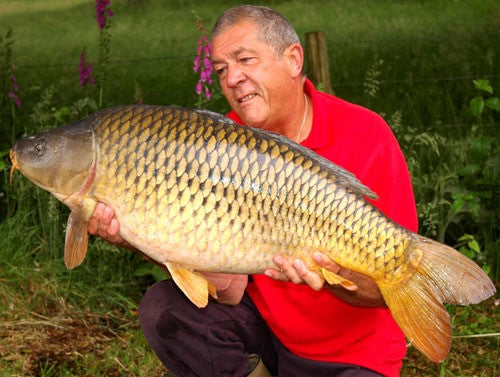
We had a string of good fish from that stretch on that first visit twenty years ago and we enjoyed it and the nearby gite so much that we have been going back on and off ever since. When you can catch carp like this can you blame us!
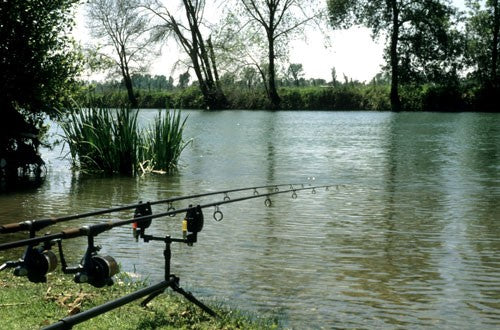
I mentioned in the previous blog that I prefer to fish with the rod tips high in the air. This is to keep as much line out of the water as possible in order to reduce the amount of pressure on the line and thus lessen the chances of the lead being dislodged. However, having the tips up in the air is not always possible due to pleasure boats or other users of the river. In these instances you need to set the rods up with the tips pointing downwards and you may even need to use back leads of some kind. This is a swim I fished some time ago the river Charente not far from Saintes. You will note that I have set up the pod so that the lines are out of the main flow, which is reduced still further by the bankside vegetation on the left.

Boat traffic can be a problem not least the barges that carry goods the length and breath of Europe. These are big, really big, with a deep draft and a big engine so they can go through your swim at one hell of a lick. Their wash can play havoc with your carefully laid bait carpet and carp traps. The river Loire supplies a large proportion of building sand that is dredged from the river in the 000s of tonnes each year. The river barges that carry the sand can be a right pain and if you think these they are bad when they go downriver in the morning…
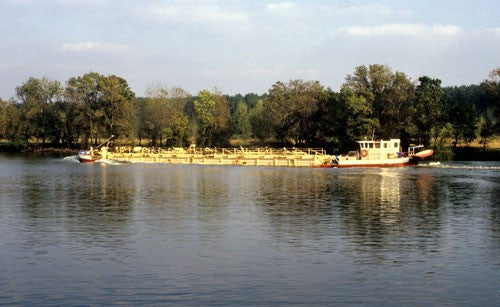
…Wait till they return fully loaded in the afternoon. That's a one meter bow wave being kicked up there and not only does it cause problems with the wash, the actual disturbance caused by their passage is considerable. Basically any bait that is on the riverbed before they pass over it is spread far and wide for hundreds of meters downstream after they have passed by. This is due to the fact that the propeller wash is so powerful that all your bait, including your hookbait, is scattered far and wide.
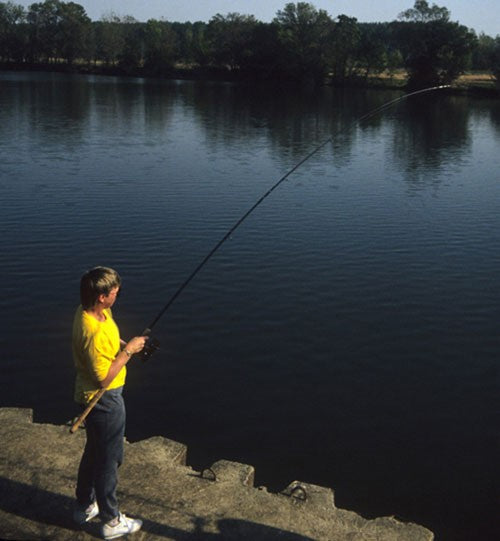
Mind you, their passage is not necessarily a bad thing. Quite often the carp really come on to feed in the coloured and disturbed water caused by a passing river barge. Here’s an old shot of my missus playing a carp on the river Maine, hooked just a few minutes after a fully laden barge had passed right over the top of her hookbait. A re-cast into the prop-wash resulted in an almost instant pick up.
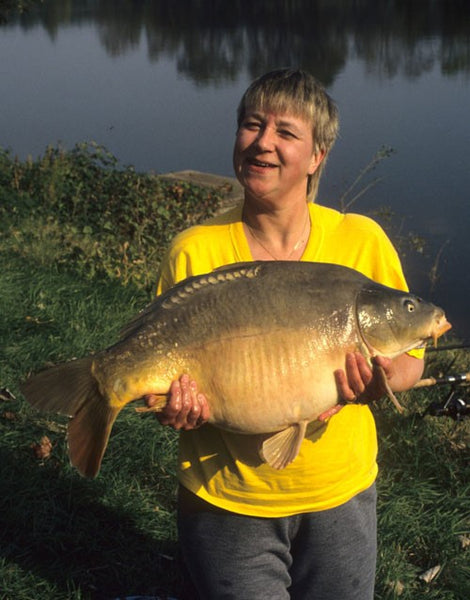
And this was the result…
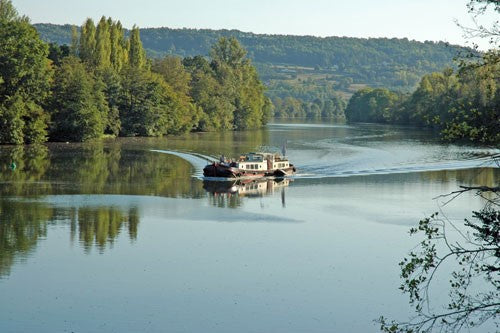
This is a shot of another big river in southern France where barge and other boat traffic is common. though the river is over thirty feet deep here, nevertheless the heavily laden boats also create hot spots on the river bed and the fish like to move in after a big boat has passed to sample the food items that he been disturbed by its passing. This is not a particularly big barge by normal standards but it is not hanging about, as you can tell by the wake, and the turbulence it generates stirs up the river bed nicely.

We have visited this stretch of the river for several years and at times have had to rely upon the passage of the bigger boats to kick-start a feeding spell. This is a lovely sleek common of over thirty pounds caught soon after the boat pictured above had passed.
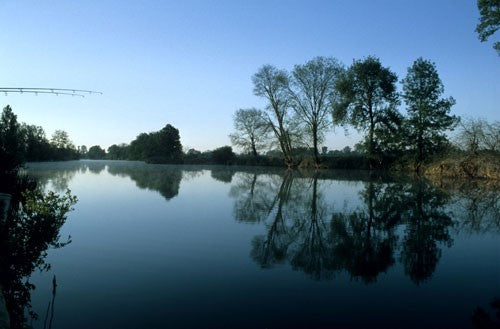
Let’s turn now to the question of locating river carp. Here you can see a fairly uniform stretch of river that at first sight looks fairly featureless, however, appearances can be deceptive and on further inspection you will discover a wealth of features both above and below the surface. This river is home to the leisure and holiday industry, providing riverboats for pleasure cruises and self drive vessels. The river is therefore kept deep enough to accommodate these without the risk of them running aground. The deep channel that runs down the centre of the river is usually fairly even as far as depth and contour is concerned so you will generally find it best to fish on the marginal slopes that define the channel.

Other areas that are always worth a try are close to or even under snag trees and fallen trees and bushes. This photo shows a typical marginal area where you can drift a hookbait down under the bush using the current. As you can see, the main flow is just off the bush, while under it the flow is greatly reduced. Cast into the current just off the bush and allow it to travel downstream for a few meters. Then engage the bail arm, push the tip well down under the surface, and let the lead swing round on a tight line using the current to position your hookbait directly under the bush. River carp are no different from lake carp in that they love to seek out cover and shade.

Just as they do in lakes, lily pads attract carp like a magnet. These pads are on the shallower marginal shelf out of the main current and carp will visit them for shade and to find food among the stems of the lily pads.
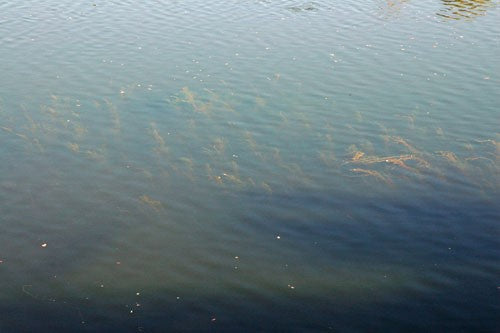
Naturally weed of all kinds attracts fish and carp in particular love to cruise and fins shelter in it. This area of weed is growing in twenty feet of water, which shows just how rich the water is. There is a huge larder of natural food in and on the weed but you need strong tackle and stronger nerves to fish it.
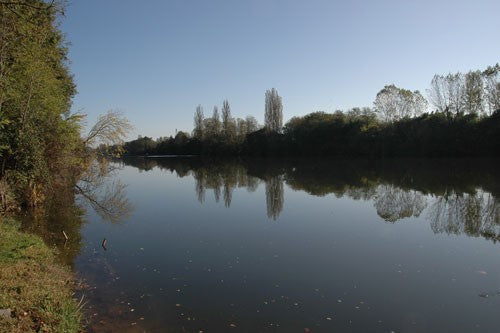
Fallen trees act like a magnet to carp and this one was no exception. There is about ten feet of water under the tips of the branches, but nearer the bank the water shallows to around five feet. You will often find carp patrolling a snaggy marginal stretch of the river and a bait cast or dropped by boat under the overhang will often bring about a take.

Don’t neglect backwaters and dead arms leading off the river. Carp can often be found sheltering from the main flow, even in summer when the water is low. They are sometime easy to locate in the clearer rivers so use your eyes and try to spot a few feeding carp before fishing. It can save an awful lot of time and frustration spent fishing for carp that aren’t there This is a nice common from the tiny river Oudon in northern France not far from Angers.
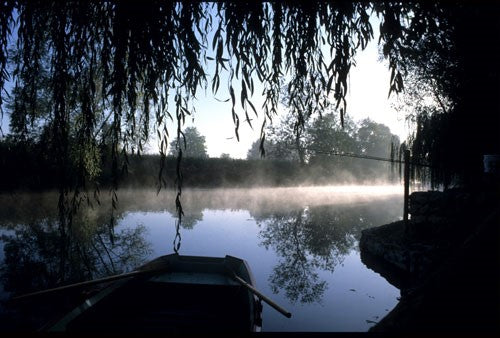
Never write off a river as being too small to hold carp. This is a swim on an tiny arm of the river Charente near Angouleme. As you can see the river looks narrow enough to jump over, yet it is deep and strong flowing with loads of weed growth and long gravel runs. Barbel and chub anglers take note: You’ll love it. I’ll say no more!
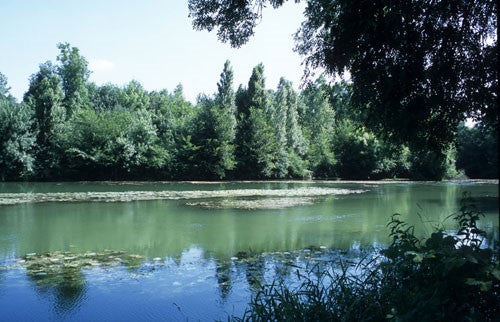
Take your time picking a swim. The first one you chose seldom turns out to be the right one. Be patient and if you find a swim that looks right, it probably is right. It doesn't take a lot of working out to figure that this is going to be a good spot.
Written by Ken Townley


